23 African Cape Buffalo Facts (Syncerus caffer)
In this post, you’ll learn 23 facts about African Cape buffalo. It is one of the most dangerous animals in Africa. You’ll learn about its aggressiveness, size, habitat, horns, diet, herd, threats and more. Plus lots of photos and an amazing video!
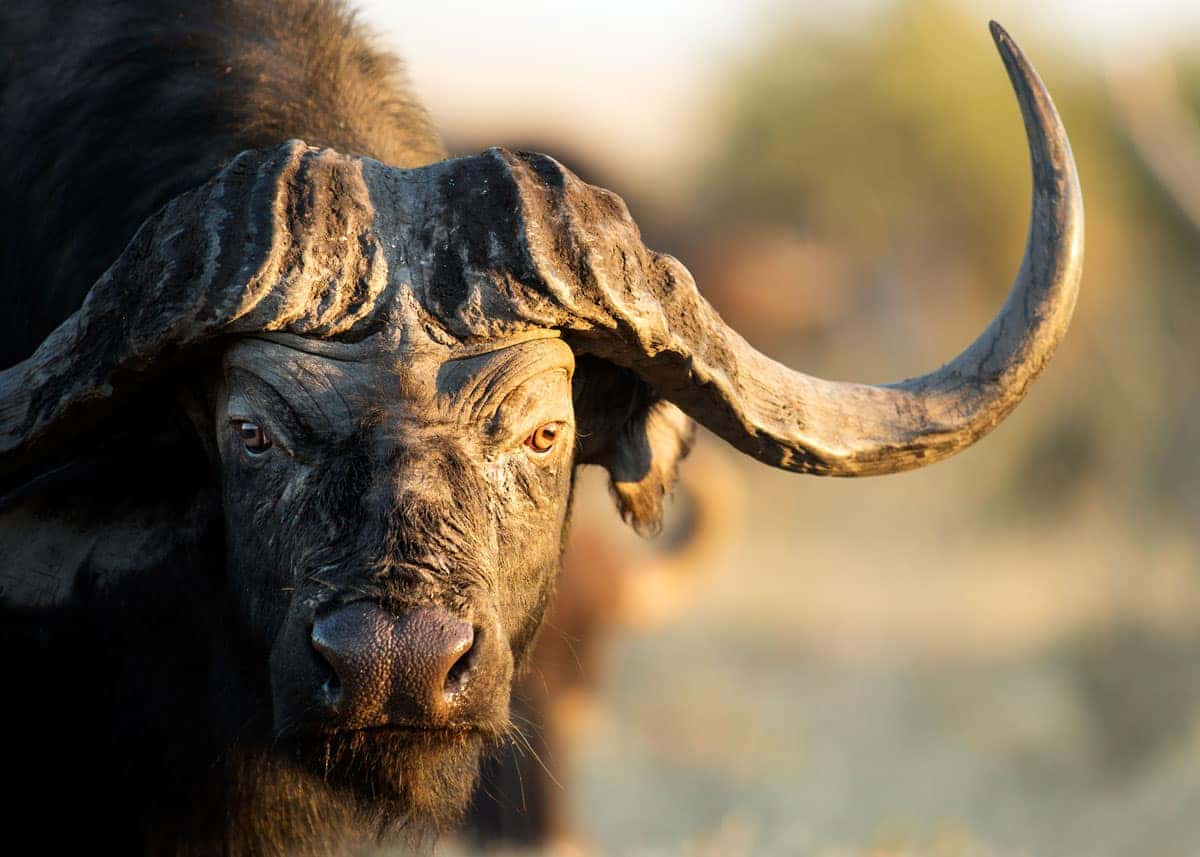
23 Facts About African Cape Buffalo
While exploring the vast lands of Uganda you may come across an array of exotic animals, ranging from mountain gorillas scrounging for food to a cheetah roaming the savanna.
Out of all the wonderful creatures, you’re most likely to bump into the fierce African Cape buffalo, a buffalo unique to Uganda’s animal kingdom.
Being one of the most abundant animals in Uganda, the Cape buffalo proves its resilience in a number of ways.
It is safe to say that you should be wary when approaching one, but nonetheless, they’re interesting animals that give us an insight into how Cape buffalo live out their lives.
Here you’ll be able to learn something that you may not have been aware of, we’ll be exploring 23 Cape buffalo facts.
1. Are Cape Buffalo Really Dangerous?
Well, that depends. If you’re minding your own business and staying far away from their calves then you should be fine.
Cape buffalo attacks are quite common amongst hunters in Uganda, giving them the term the “big five”.
“The Black Death” and “widowmaker” are also given names due to their aggressive nature.
It is estimated that around 200 people die every year from these animals, labeling them as one of the most dangerous creatures in Africa.
Learn more about how fast African buffalos can run.
2. How Much Does a Cape Buffalo Weigh?
The average Cape buffalo weighs anywhere from 425 kg to 875 kg (935–1,910 pounds), making them extremely heavy and durable.
When compared to other bulls and cows they have at least a 200-pound difference in weight, depicting their fierce size.
They also aren’t very tall, standing quaintly at 130-150 cm (51-59 inches), making them relatively short in comparison to their giant size and weight.
3. What Does a Cape Buffalo Look Like?
Your average Cape buffalo possesses many features similar to that of the water buffalo, but there are a few characteristics that make them unique — first being their abrasive horns.
The horns kind of form a shield usually called a “boss”. The species itself is very robust, boasting a long but broad body equipped with a thick red coat.
Their head is carried low and their top is located right below the backline. Their front hooves are wider than their back, which gives the buffalo ease when walking.
Overall, cape buffalo look uniquely different than the water buffalo due to their environment, ecosystem, and personality. More on this below.
4. What Makes Cape Buffalo’s Horns So Unique?
To follow up from the fact above, Cape buffalo have unique horns not seen on any other buffalo, labeling them as exotic. Hunters who obtain their horns usually treasure them, mounting them on walls or portraying them as trophies.
When calves, their horns aren’t fully developed yet, so they are a sign of maturity. When they reach about seven or eight years old, their bosses become “hard”.
Keep in mind that there are four subspecies of African buffalo, giving them all unique characteristics. Although they’re not dramatic they are important.
The Cape buffalo is, of course, the most renowned in horn size. They have a solid shield of horn that covers the skull where the horns emerge.
Both males and females have horns, but the horns of the male grow larger and can measure close to a whopping four feet across. It was once stated that their horns could rival a car, tipping it on its side.
Learn about the 6 differences between horns and antlers.
5. What Do Cape Buffalo Eat?
This fact surprised me and I think it may surprise you as well. Cape buffalo are herbivores, and so eat only vegetation. Although their aggressive nature seems to be an act of carnivores, they are in fact suited to only digest plants and herbs, their favorite being grass and shrubs.
Occasionally they may eat insects, but this occurs very rarely. They usually feed at night or during cool periods of the day, allowing them to focus on survival during the extreme weather.
Due to their large size, water intake is necessary, making sure they’re never more than nine miles (15km) from a river.
6. Where Do Cape Buffalo Exactly Live in Africa?
Cape buffalo are pretty abundant across all of Africa, but especially in the southern region. Uganda, in specific, has the majority while the upper regions such as Chad and Algeria have less density.
Cape buffalo tend to thrive in areas such as swamps or floodplains due to the abundance of water.
These climates are usually only found in Central and Southern Africa, limiting migration North. Cape buffalo can also be seen in areas such as the mopane grasslands or in forests of Africa’s major mountains.
It is said that they are not an endangered species due to their diversity in climate, allowing for optimal reproduction.
7. What Kind of Habitats Do Cape Buffalo Live in?
Cape Buffalo encompasses a large range of habitats, including semi-arid bushlands and montane grasslands to coastal savannas and lowland rainforests. It is vital to remember that cape buffalo need to stay near water, including rivers, lakes, swamps, and floodplains.
These buffalo prefer to live on tall grass, giving them the name “grazers”. Herds of buffalo mow down grasses with ease. Due to their unique tongue, Cape buffalo can feed on the grass with a quick incisor motion allowing them to out-eat most other African herbivores.
Unlike other groups of large African mammals, Cape buffalo herds often have more than 1,000 members at any given time, making it extremely difficult to hunt.
8. How Aggressive Are Cape Buffalo?
Similar to the fact above, Cape buffalo are indeed the most aggressive buffalo in the world.
“No One Survives A Cape Buffalo Attack,” written by Graham Curnin, describes the true event in which took place nearly a decade ago. In his own words, “Once the buffalo charges, it’s every man for himself,” you can only imagine what he had been through when he lost his two friends during a hunting trip.
He explains in great detail Cape buffalo’s protection for their youth and themselves.
He proclaims that they’re highly social creatures and if one attacks, they’ll all attack. In the end, Curnin portrays very clearly that people should stay far away — “and maybe carry a shotgun, too.”
In this now famous video (Battle at Kruger), you can see the aggressive nature of Cape buffalo – especially when in a herd. The video is a little grainy (was shot back in 2007) but makes up for it with pretty amazing footage.
To stay safe, you might consider viewing them from a distance. A great pair of safari binoculars or camera with zoom lens will let you see them and stay out of harm’s way. Here’s how to choose the best camera for safari.
9. How Common Are Cape Buffalo Attacks?
According to Ryan S. J., you’re 49.5% more likely to be killed by a Cape buffalo when hunting when compared to sightseeing. Personally, I don’t know how they got that statistic, but I don’t want to find out.
Uganda has the highest attack rate when it comes to Cape buffalo, surpassing lions and leopards. It is also said that when a buffalo is injured, they’ll ambush and attack the pursuer without hesitation.
How’s your Swahili? Check out our guide to 100+ animal names in Swahili.
10. Can a Cape Buffalo Really Kill a Lion?
Lions are nature’s most formidable hunters. They’re armed with large, sharp teeth, able to cover 91.4 meters (100 yards) in about six seconds and rarely travel alone.
It may come as a surprise that the African Cape buffalo can go toe-to-toe with a lion, ending with a bloody battle. It has been reported, occasionally, on how the hunter became the hunted.
African lions rarely hunt Cape buffalo, but when they do, they must put up a good fight. It usually takes about three lions to take down a Cape buffalo, and that’s when the cape buffalo is alone.
Due to the buffalo’s huge size and weight, it makes it very difficult for a lion to pounce on, let alone kill.
11. How Long Can Cape Buffalo Live?
The typical African Cape buffalo can live anywhere from 15 to 18 years of age, while captive buffalo can reach 30 years old. Factors that limit their age are environmental and genetic.
The longest recorded life of a Cape buffalo was 32.8 years old. She was held at Dresden Zoo and lived a happy life. In the wild, they are often susceptible to disease and predators, limiting their lifespan.
12. Is it Legal to Hunt Cape Buffalo? What Does it Taste Like?
Due to their abundant population, it’s legal to hunt Cape buffalo… but it’s not free. Averaging out at a trophy fee of $10,000, you’d better be prepared for a fight.
Although hunting will not endanger the species, it is often frowned upon due to its aggressive nature.
Dozens of hunters get killed each year hunting cape buffalo.
Reports say that it tastes like tougher beef, leaner than domesticated beef. It is, although, illegal to sell the meat after you’ve hunted it.
13. Can Cape Buffalo Be Domesticated?
Due to their unpredictable nature, African Cape buffalo have never been domesticated. This is due to a multitude of reasons, the first being their defensive, aggressive character.
This very nature has been embedded into Cape buffalo’s DNA, making them fit for life on the savannas, not around humans.
14. How Large is a Herd of Cape Buffalo?
Your typical Cape buffalo herd can range from 1,000 to 5,000, depending on the region and water source. Coastal regions tend to breed larger herds while inland zones limit the size and population.
Overall, these buffalo outrank any other herd when you’re looking at body size.
15. How Often Do Cape Buffalo Give Birth?
Cape buffalo give birth on a slower scale than many other large mammals. Breeding takes place during the months of March through to May. The mother gives birth to one calf and very rarely does it conceive twins.
The gestation cycle lasts about 330 days (11 months).
16. How Long Does a Cape Calf Stay With its Mother?
A calf will typically stays with its mother until the age of two. Once they feel mature enough, they follow behind the bachelor groups.
Unlike other bovines, Cape buffalo calves tend to need more nurture than others.
17. Are Cape Buffalo Endangered?
As of 2018, Cape buffalo are nowhere near endangered. Matter of fact, they are the least of all species in Africa to become endangered due to their unique characteristics and survivability.
They are listed Least Concern by the IUCN and more than three-quarters of their native land is in protected areas.
Although some populations of subspecies may be lowering due to deforestation, others will remain untouched at large, ensuring a healthy balance.
18. How Large is the Cape Buffalo Population?
It is estimated that around 900,000 Cape buffalo roam the grasslands of Africa, making them one of the most populated mammals that aren’t endangered.
Their ability to reproduce and defend themselves proves their resilience.
As of 2018, the population seems to be increasing 10,000 every year, allowing us to witness growth in a species.
19. What Threats Face the Cape Buffalo?
Currently, there are no prominent threats that face the Cape buffalo. Subtle threats that are arising are Global Warming and extreme poaching. Even though they’re abundant in population, a decrease in their habitat could put them at risk.
The climate can also affect their breeding ground, resulting in infertile female buffalo. It’s also important to know that the Cape buffalo isn’t invincible when it comes to human error.
20. Is the Cape Buffalo a Predator?
The Cape buffalo only eat grass and do not hunt for their food. Unlike lions, they are not predators but prey. If you think about it, most predators stay away from them due to their natural defenses.
21. What Diseases Affect the Cape Buffalo?
The Cape buffalo is prone to most diseases other animals have in that region, such as corridor and bovine tuberculosis. These diseases remain dormant inside populations as long as they’re healthy.
Overall, there is no predominant virus throughout the Cape buffalo population, securing their future.
22. What Types of Buffalo Live in Africa? 4 Types
Africa boasts a multitude of buffalo subspecies, ranging from the iconic Cape Buffalo to the lesser known Nile Buffalo. Each of these subspecies is unique in its own way, allowing us to see distinct differences in all of them.
- Cape Buffalo (Syncerus caffer): The most typical and largest out of its subspecies is the southern savanna buffalo, also known as the Cape buffalo. East and Southern Africa are the home for these buffalo, they are rarely found up North. The color of the Cape buffalo is the darkest out of all other, almost deep black. Their fur is also unique, having more density than others.
- Forest Buffalo/Dwarf Buffalo (S. c. nanus): The smallest of the subspecies is the Forest Buffalo, averaging out with a height of 120 cm and a weight around 270 kg (600 pounds), almost half that of the Cape Buffalo. West and Central Africa are where they originated but they reside prominently in the African rainforests. Their color is a velvet red, with occasional darker spots spread evenly throughout the body.
- Sudanese Buffalo (S. c. brachycero): Both the Cape Buffalo and the Forest Buffalo make up the Sudanese Buffalo, sharing both genetics and making a new subspecies. They occur predominantly in West Africa but can be observed throughout Central Africa. They are relatively small, but larger than the Forest Buffalo, averaging out with a weight of 600 pounds. They are dark brown, allowing for easy camouflage when being hunted. Unlike other subspecies, they tend to migrate more often than usual.
- Nile Buffalo (S. c. aequinoctialis): The savannas of Central Africa are home to the Nile Buffalo. Similar to the Cape Buffalo, it possesses a lighter color with a modest size. This subspecies is the lowest in density but is nowhere near endangered.
23. Cape Buffalo vs Water Buffalo: 3 Buffalo Species
There are only 3 buffalo species in the world: Cape Buffalo and Water Buffalo (wild and domesticated).
While often called a buffalo, the American bison isn’t actually a buffalo. Learn the differences between buffalo vs bison.
The Water Buffalo is the largest of all members of family Bovidae, weighing between 1,500 and 2,650 pounds, accompanied by a staggering height of 6.2 feet.
In size, they out-rival the Cape buffalo, but that doesn’t necessarily mean they’re superior. In fact, it is claimed that water buffalo, unlike Cape buffalo, are more docile when it comes to humans. This is the leading cause of their endangerment.
Water buffalo originate from the southern parts of Asia, but were domesticated to the rest of the world a few thousand years ago.
They’re mainly used for transportation and transit, and less likely to be hunted for food. Unlike the Cape buffalo, they spend most of their day submerged in muddy waters, regulating their temperature during the heat.
Due to their differing habitats, the diet between the two buffalo species differ. While Cape buffalo enjoy grass from the plains, water buffalo thrive off of aquatic plants and insects.
The ferocity between the Cape buffalo and water buffalo differ drastically. Cape buffalo are notorious for their aggressive nature while water buffalo have no reported killings in the past decade.
I hope you’ve enjoyed these Cape buffalo facts! If you have a fact to share please join us in the comments. And if you ever get a chance to visit Africa, try to snag a couple photos – just make sure you’re a few miles away.

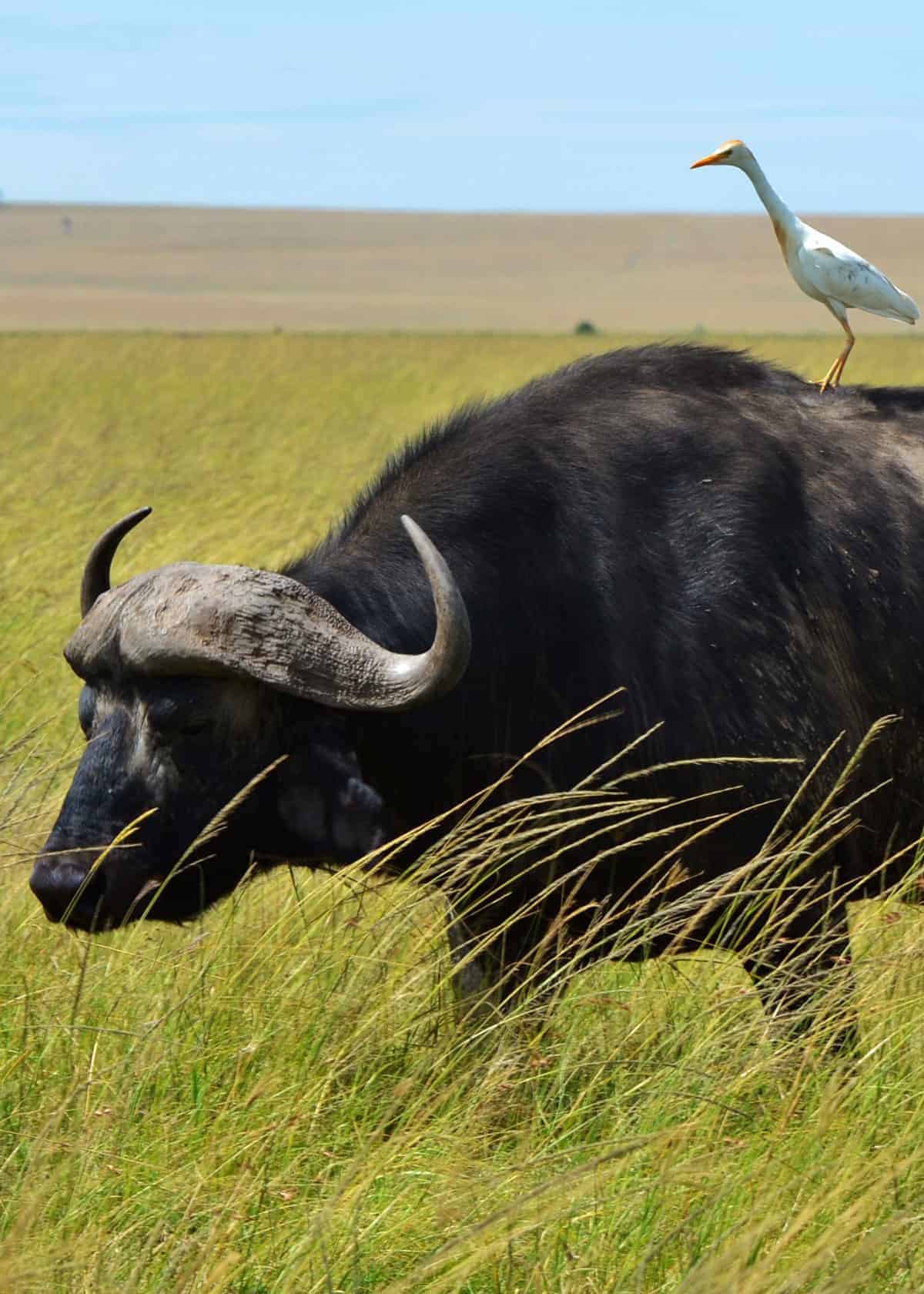
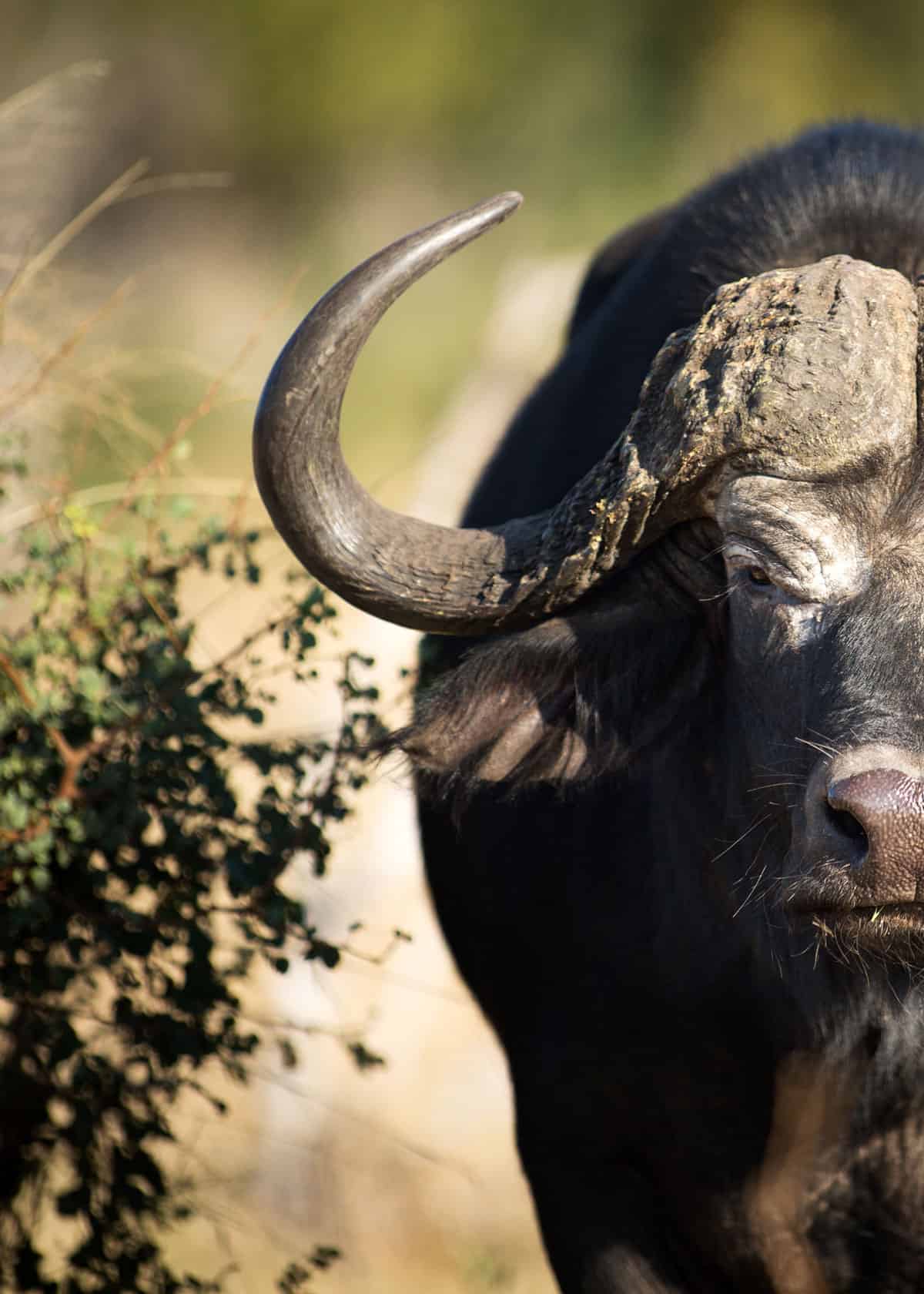

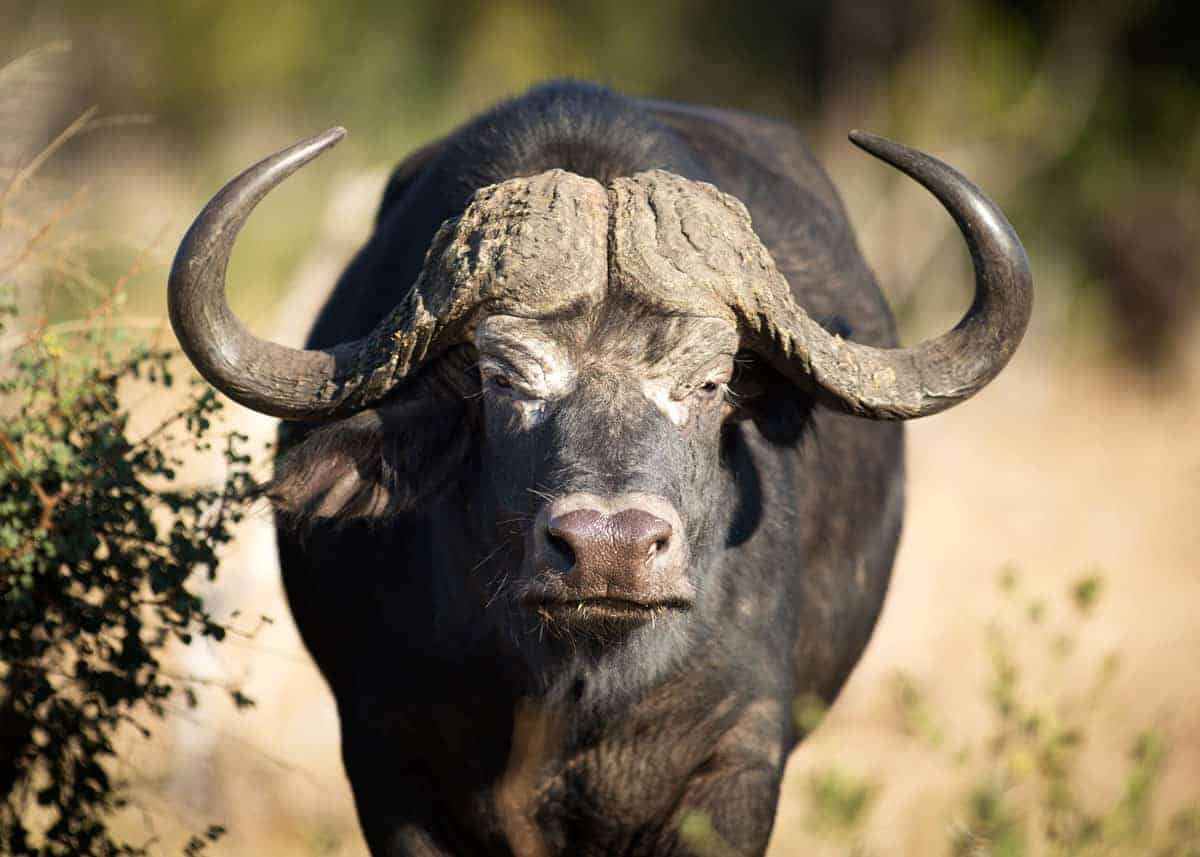
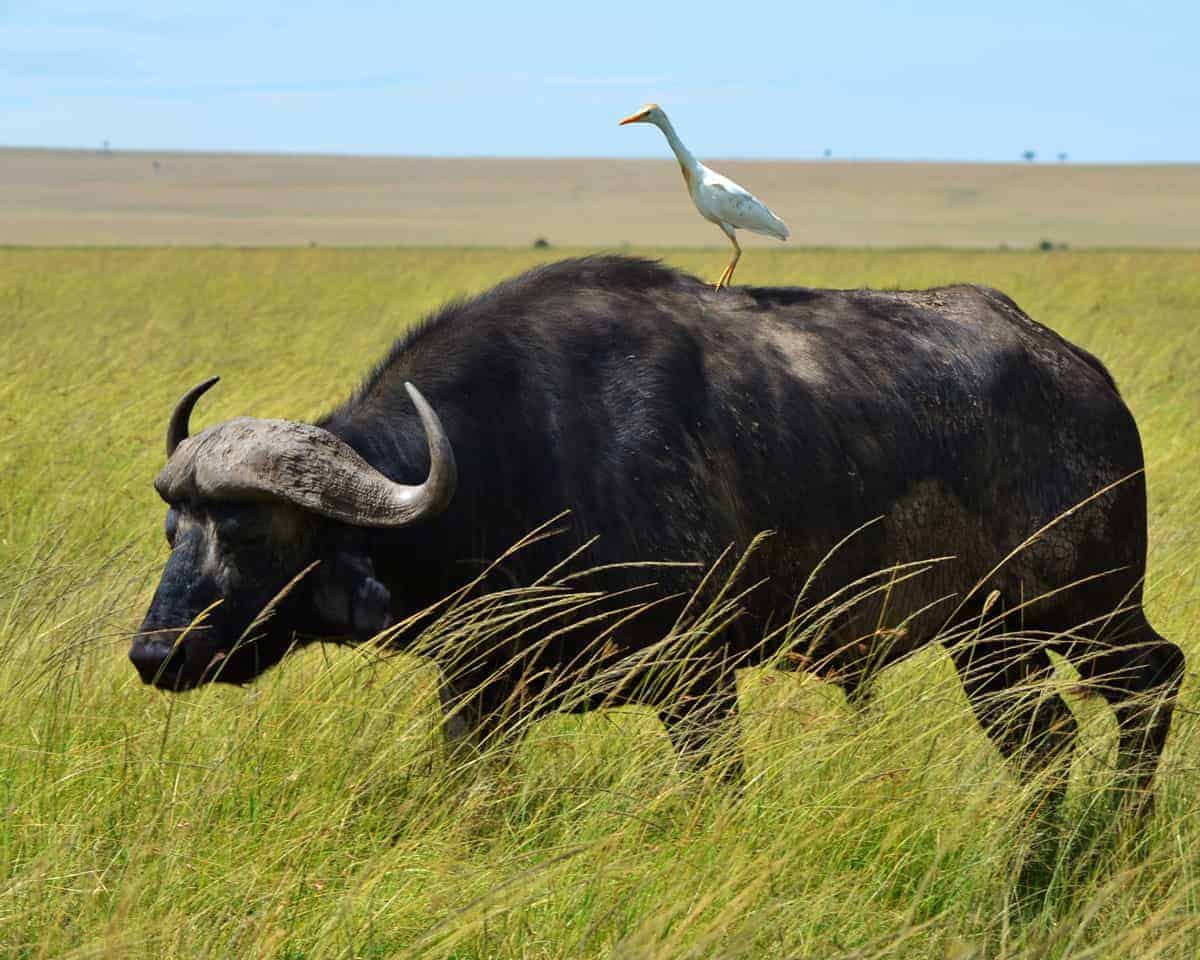
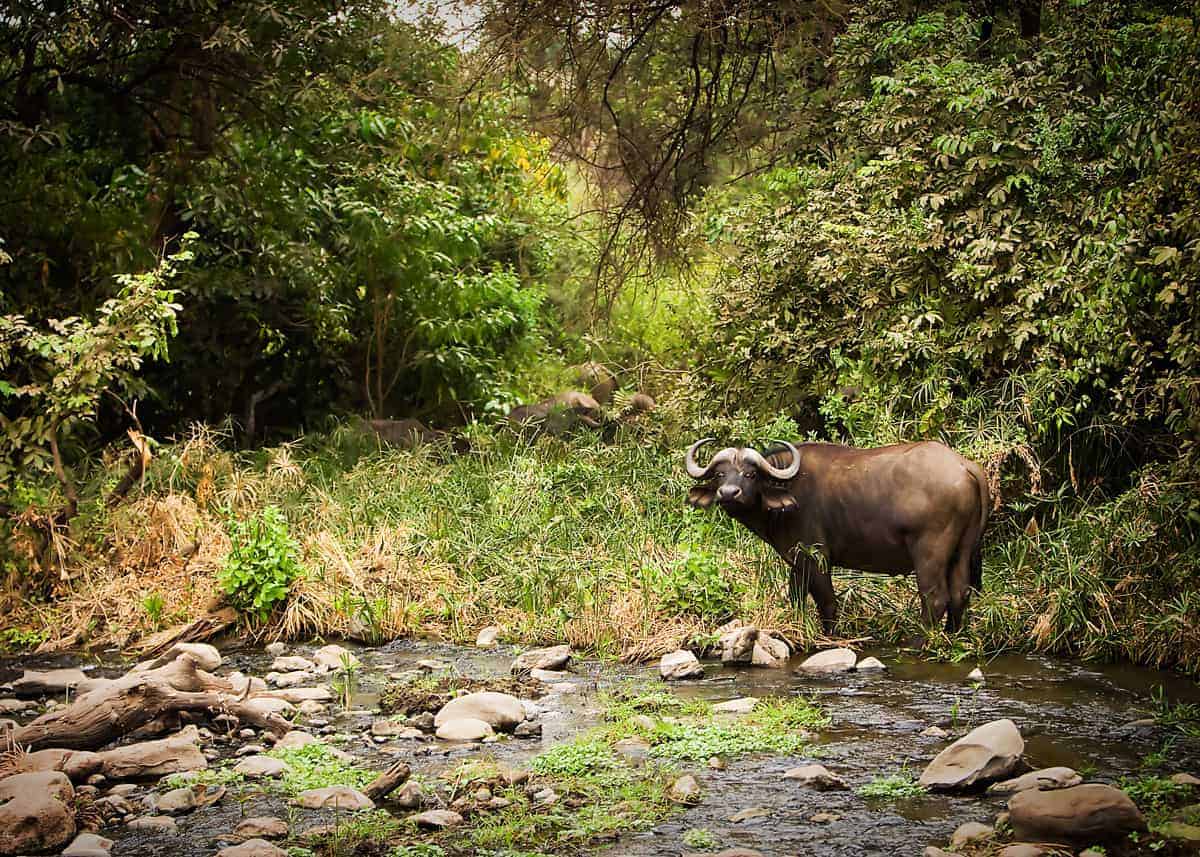
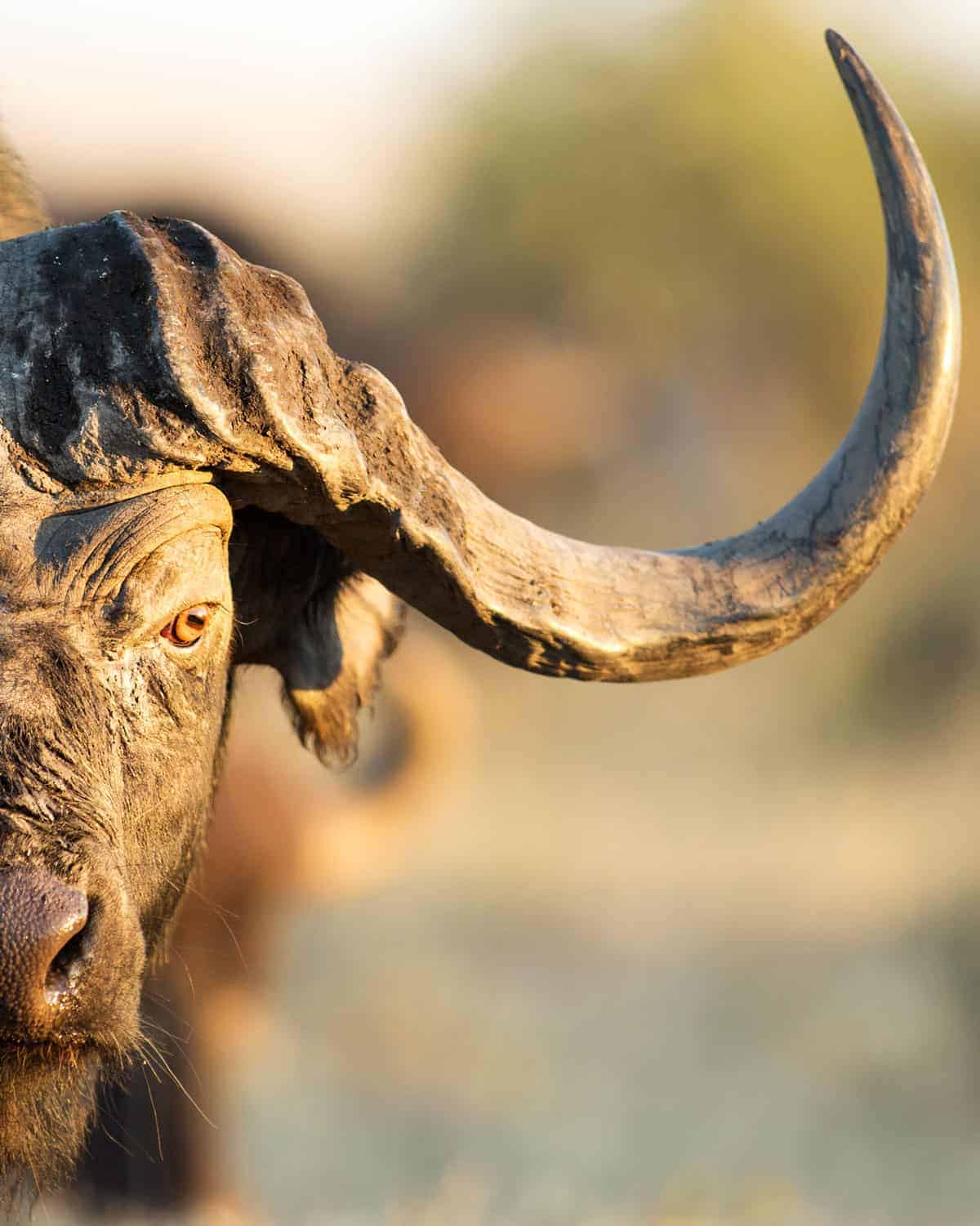

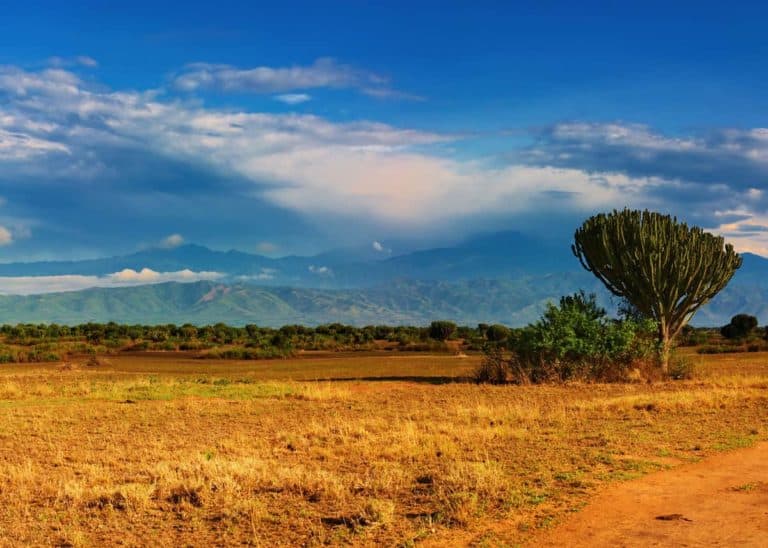




The buffalo in Mgahinga is another subspecies. Mountain buffalo S. c. mathewsi According to Bovids of the world.